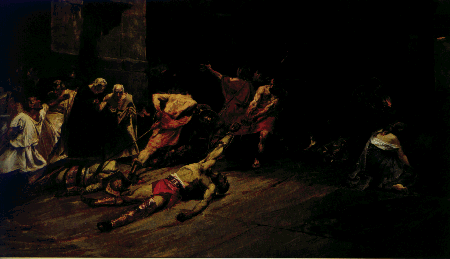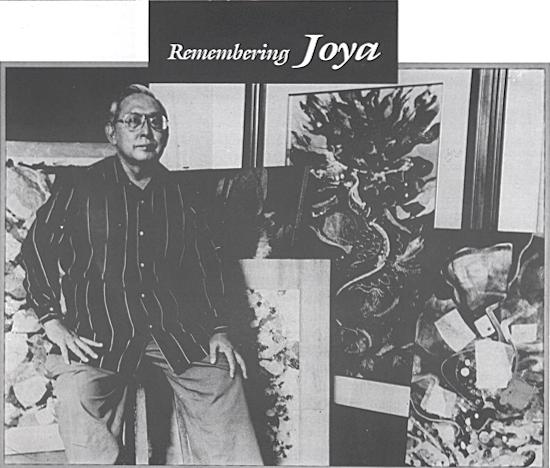

In the last half of the 19th century, Filipino painters showed enough maturity of concept and technique to merit critical acclaim.
Damian Domingo got recognition as the “father of Filipino painting.” Towards the end of the Spanish regime, two Filipino painters
won recognition in Europe – Felix Resurreccion Hidalgo and Juan Luna. Hidalgo’s Antigone
and Luna’s Spolarium were both acclaimed in Europe as masterpieces of Filipino painting.
In 1884, Luna won the first Gold Medal at the Exposicion Nacional de Bellas Artes for his Spolarium. This monumental painting shows
fallen gladiators being dragged to an unseen pile of corpses in a chamber beneath the Roman arena.

The name of Jose Joya (1931 - 1995) is synonymous to the best in Philippine abstract expressionist art. He produced an excellent body of bold and lyrical works.

Source: National Commission for Culture & the Arts
http://www.philserv.com/ncca